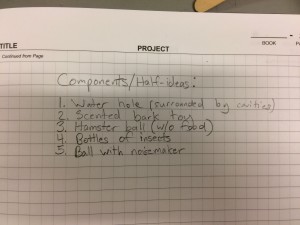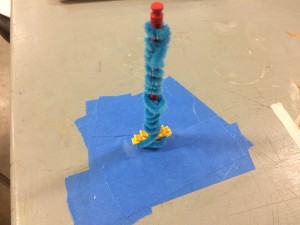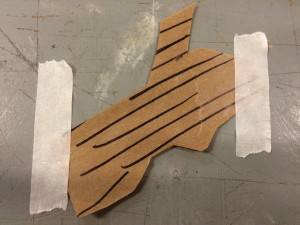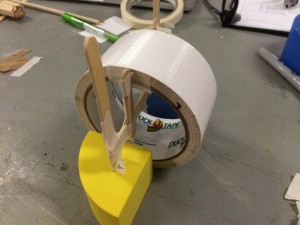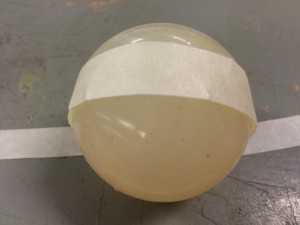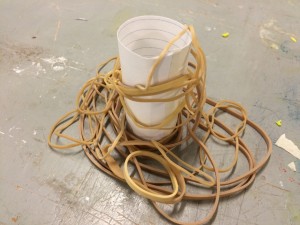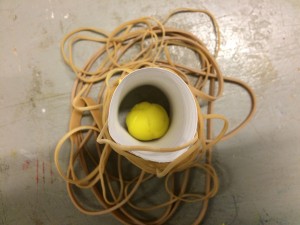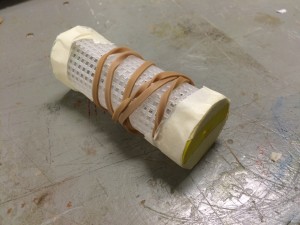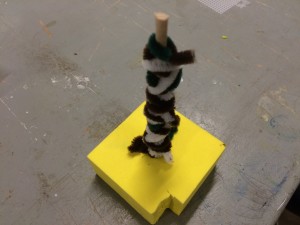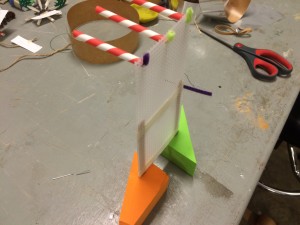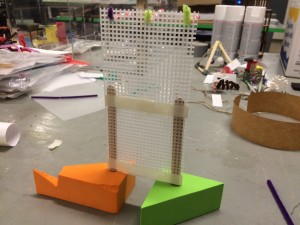In this assignment, I needed to brainstorm and prototype ideas for enriching the lives of the two anteaters at the Houston Zoo. The solutions needed to blend in well with the exhibit and be cost-efficient, sturdy, and durable.
Since I didn’t know anything about anteaters, I browsed the internet for some information on how they live in the wild, as well as current enrichment methods used by other zoos. I then came up with a list of potential anteater enrichment ideas. From this list, I selected five ideas that I deemed to be most complete and five ideas that were either device components or less developed possibilities.
Idea 1:
This idea is basically a water hole with a fountain in the middle. I read that anteaters have been known to bathe, so I figured giving them a way to cool off would help them handle the Houston heat.
Idea 2:
This is just a toy made to look like tree bark. I also read that anteaters have a strong sense of smell, so I thought giving the toy a nice “ant” scent would make playing with it more entertaining.
Idea 3:
My next idea was basically a giant hamster ball. The anteaters are in an enclosed exhibit, so it’s essential that they be given the resources to stay active. The full design would include a food dispensary system located far enough in front and above the anteaters so that they wouldn’t be able to to stand still and snatch tasty morsels with their 2ft-long tongues. I only prototyped the hamster ball itself, which is why I included this idea in the “half ideas” section.
Idea 4:
This is an individual component of one of my complete solutions. It’s hard to tell from the prototype, but it’s an empty container with a long nozzle. The container will be situated at the top of a climbing structure and will contain ants and termites for the anteater to snack on.
Idea 5:
I came across this device in a YouTube video. The idea is to put a noisemaker inside a plastic ball for extra amusement. I thought it would be interesting to expand on this design and record actual anteater sounds, then have the speaker inside the ball blurt them out when the anteater bats at the ball or when the ball comes into sharp contact with another surface. Note that the speaker is not shown because it’s inside the ball.
Now for the complete solutions.
Complete solution 1:
I found another YouTube enrichment video in which the zookeepers had given the anteaters little balls of fake termite nest, which they enjoyed ripping apart with their claws. I thought this was a clever idea, so I decided to expand on it by including a dispensary chute. The plan is to place the mouth of the chute inside the exhibit, probably camouflaged with dirt as shown by the rubber bands. The zookeepers will load the chute with fake termite nest balls, shown by the play-doh ball, and the chute will deliver the balls to the anticipating anteaters.
Complete solution 2:
This idea is based on an existing enrichment device, a barrel with holes along it’s curved outer shell for the anteater’s tongue to zip in and grab ants and termites. I thought it might be more interesting if there was more distance for its tongue to cover, so I designed a similar device, but with holes at either end. The device can be camouflaged with grass, mud, or any other natural substance, and inserted directly into the exhibit.
Complete solution 3:
This idea is just a scratching post. I read that anteaters love using their claws to break open anthills and termite nests, so I figured that I could design a device to help them use their claws in other ways. The scratching post could also be scented like the bark toy to intrigue the anteater.
Complete solution 4:
While I was doing my internet research, I found out that anteaters like to sleep in enclosed, dark places. In the wild, they’ll often sleep in dense bushes or tall grass, often times they’ll even carve out a cavity in the ground to lie down. I figured I could design a hollow log to create that kind of space for them.
Complete solution 5:
Finally, I found that anteaters can climb. In the wild, they scale tree trunks to reach termite nests high above the ground. I wanted to give them a chance to climb in captivity too. For extra enrichment, I’ve included several insect-carrying containers (straws in the model). The anteaters will climb the structure (possibly a tree trunk) and then have to use their tongues to snatch ants from the containers.
Overall, I found that there were more ways to provide enrichment for the anteaters than I had originally thought. At first, I thought all of my ideas would just be focused on creating small holes for them to stick their tongues through. But as I did more research, I found I could help recreate their natural environment in other ways as well.
I generally take longer to work on projects than my classmates, so the entire process from researching and brainstorming to typing this sentence took me about four and a half hours. Really, I started at 7:00 and it’s now 11:30.
I hope some of these ideas will be helpful for the ENGI 120 team working on this project or the client at the Houston Zoo.

